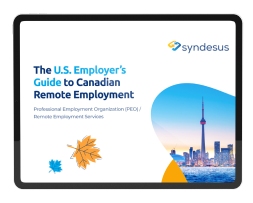Understanding the difference between contractors and employees is crucial for Canadian businesses. Misclassification can also lead to unexpected tax obligations for both the employer and the worker. Employee misclassification can lead to significant legal and financial consequences. Let’s debunk some common myths about contractor vs employee status under the Employment Standards Act (ESA).
Understanding the Difference Between Employees and Independent Contractors
Understanding the difference between employees and independent contractors is crucial for both workers and employers in Ontario. The distinction between the two is not always clear-cut, and misclassification can lead to significant consequences. Employees are typically integrated into the company’s operations, receiving steady wages and benefits such as vacation pay and employment insurance. In contrast, independent contractors typically have more control over their work, bear financial risk, and are responsible for their own taxes and benefits.
Misclassifying a worker can result in legal disputes, financial penalties, and damage to a company’s reputation. Therefore, it’s essential to understand the key differences and ensure accurate classification. In the next section, we will delve deeper into the specific characteristics that distinguish employees from independent contractors.
Key Characteristics of Employees and Independent Contractors in Canada
Employees and independent contractors have distinct characteristics that set them apart. Here are some key differences:
-
Control: Employees are subject to the direction and control of their employer, whereas independent contractors have more autonomy and control over their work.
-
Employment Contract: Employees typically have a written employment contract that outlines their terms of employment, including their job duties, pay, and benefits. Independent contractors, on the other hand, may have a contract or agreement that outlines the scope of their work, payment terms, and other details.
-
Benefits: Employees are entitled to benefits such as vacation pay, employment insurance, and overtime pay, whereas independent contractors are responsible for their own benefits and expenses.
-
Financial Risk: Independent contractors bear the financial risk of their business, including the risk of loss or damage to their equipment or property. Employees, on the other hand, are not responsible for the financial risks of their employer’s business.
-
Taxes: Independent contractors are responsible for their own taxes, including income tax and GST/HST. Employees, on the other hand, have their taxes deducted by their employer.
-
Worker Classification: Employees are classified as employees under applicable employment standards legislation, whereas independent contractors are classified as independent contractors.
It’s worth noting that the distinction between employees and independent contractors is not always clear-cut, and some workers may exhibit characteristics of both. In such cases, it’s essential to consult with a legal professional to determine the correct classification. Understanding these key characteristics can help employers make informed decisions and avoid the pitfalls of misclassification.
Misconception #1: A Written Agreement Defines the Employment Relationship
Many believe that a signed employment contract stating “independent contractor” is enough to establish contractor status. However, the reality is more complex. Courts and regulatory bodies examine the actual nature of the working relationship, not just the paperwork. Even with a contractor agreement in place, the day-to-day work dynamics could classify a worker as an employee, leading to potential legal disputes.
Misconception #2: Control is the Only Factor That Matters
While control over work is significant, it’s not the sole determinant of employment status. Other crucial factors include:
-
Ownership of Tools: Employees typically use company-provided equipment, while contractors often supply their own tools, highlighting their autonomy and financial responsibility.
-
Financial Risk: Contractors generally have opportunities for profit and risk of loss, unlike employees who receive steady wages.
-
Integration: The more integrated a worker is into company operations, the more likely they are to be considered an employee.
-
Business Expenses: Independent contractors are responsible for their own business expenses, unlike employees who are reimbursed by their employer.
Misconception #3: Contractors Can’t Receive Benefits
Some believe that providing benefits automatically classifies a worker as an employee. However, benefits alone don’t determine employment status. The overall employment relationship and work performance are more critical factors in classification.
Additionally, providing benefits to contractors can have implications for tax deductions for both the employer and the contractor.
Misconception #4: Contractors Have Complete Independence
While independent contractors typically enjoy more independence than employees, this isn’t absolute. If a contractor faces significant control over how and when they perform tasks, they may be considered an employee under the ESA. If a contractor’s work schedule is heavily dictated by the employer, they may be considered an employee under the ESA.
Misconception #5: Contractors Aren’t Entitled to Employment Standards Act Protections
This is a dangerous myth for employers. Misclassified contractors can claim entitlements under the ESA, including minimum wage, overtime pay, vacation pay, and termination notice. Companies that incorrectly classify workers may face serious legal and financial repercussions.
Consequences of Misclassifying a Worker
Misclassifying a worker as an independent contractor when they should be classified as an employee can lead to severe legal penalties and financial consequences for employers. Financial penalties for non-compliance with applicable employment standards legislation are just the beginning. Employers may also face legal disputes with workers seeking compensation for lost benefits or unpaid wages. Such disputes can damage the company’s reputation and result in negative publicity.
Additionally, employers may be liable for unpaid employment insurance premiums and other benefits, increasing the financial burden. Misclassification also heightens the risk of audits and investigations by government agencies, further complicating the situation. Therefore, it is essential for employers to accurately classify their workers to avoid these consequences and ensure compliance with employment laws and regulations.
Key Factors in Determining Worker Classification
The Canada Revenue Agency (CRA) emphasizes two critical factors in determining employment status:
-
Intent of the Relationship: The initial agreement between parties.
-
Degree of Control: How much control the employer exerts over the worker’s activities.
Employers must also consider the implications for employment insurance premiums when determining worker classification.
Best Practices for Classifying Employee vs Contractor in Canada
To avoid the pitfalls of misclassifying workers, employers should adhere to best practices for worker classification.
Start by reviewing all job positions within the company to determine whether they are suitable for an employee or independent contractor. Consulting with a legal professional for legal advice can provide clarity on the appropriate classification for each worker.
Providing clear contracts that outline the nature of the working relationship and the responsibilities of each party is crucial. Regularly monitoring the working relationship ensures that workers meet the criteria for their respective classification.
Staying up-to-date with changes to employment law in Canada is also vital to ensure compliance with all regulations. By following these best practices, employers can reduce the risk of misclassifying workers and ensure compliance with employment laws and regulations.
Work with Canadian Expert EOR for advice, contract review.
The Importance of Clear Contracts
Clear contracts are essential for employers to avoid misclassifying workers and ensure compliance with employment laws and regulations. A well-drafted contract should outline the nature of the working relationship and the responsibilities of each party. It should specify the terms and conditions of the working relationship, including payment terms and termination procedures. A well-drafted contract should also clearly outline the contractual obligations of each party.
The contract should also include a clear description of the work to be performed and the expected outcomes. Defining the level of control and autonomy the worker will have is crucial, as is specifying the benefits and entitlements the worker is eligible for. By having a clear contract in place, employers can avoid disputes and ensure that both parties understand their obligations and responsibilities.
Employment Insurance and Independent Contractors
Independent contractors are not entitled to employment insurance benefits, as they are not considered employees. However, employers may still be required to pay employment insurance premiums for independent contractors if they are deemed to be employees under the Employment Insurance Act.
To avoid liability for unpaid employment insurance premiums, employers should ensure that they accurately classify their workers. Providing clear contracts that outline the nature of the working relationship can help in this regard. Accurate classification and clear documentation are key to avoiding financial and legal repercussions. Employers should also be aware of the tax implications of misclassifying workers.
Staying Compliant with Employment Laws and Regulations
Staying compliant with employment laws and regulations is essential for employers to ensure legal compliance and avoid misclassifying workers. Key laws and regulations that employers should be aware of include the Employment Standards Act (ESA), the Employment Insurance Act, the Canada Pension Plan (CPP), the Income Tax Act, and the Occupational Health and Safety Act (OHSA).
By staying up-to-date with changes to employment law in Canada and following best practices for classifying workers, employers can reduce the risk of misclassifying workers and ensure compliance with employment laws and regulations. Compliance not only protects the company from legal and financial repercussions but also fosters a fair and transparent working environment.
Conclusion: Getting Classification Right
Navigating the complexities of employee classification in Canada can be challenging, especially for businesses unfamiliar with local laws and regulations. Misclassifying workers can lead to significant legal and financial repercussions. To ensure compliance and streamline your hiring processes, partnering with a Canadian expert EOR like Syndesus is invaluable.
Syndesus specializes in helping U.S. companies effectively manage their Canadian workforce by providing comprehensive services that include payroll management, compliance with employment standards, and human resources support. By leveraging their expertise, you can focus on growing your business while they handle the intricacies of Canadian employment law.
If you’re ready to simplify your hiring process and ensure compliance, book a free consultation with a Syndesus EOR expert today. Let Syndesus be your trusted partner in navigating the Canadian employment landscape, so you can attract and retain top talent without the hassle.

